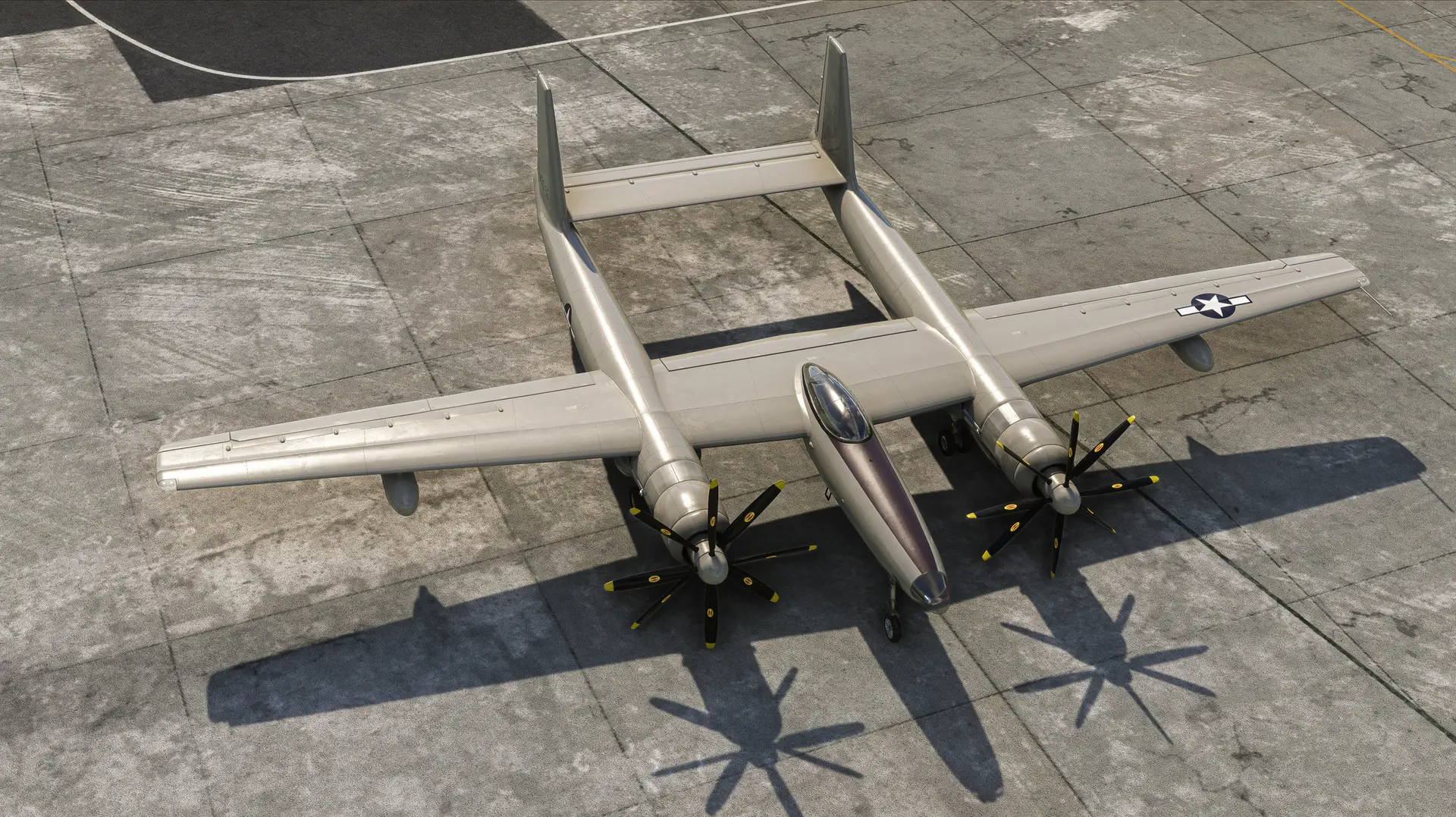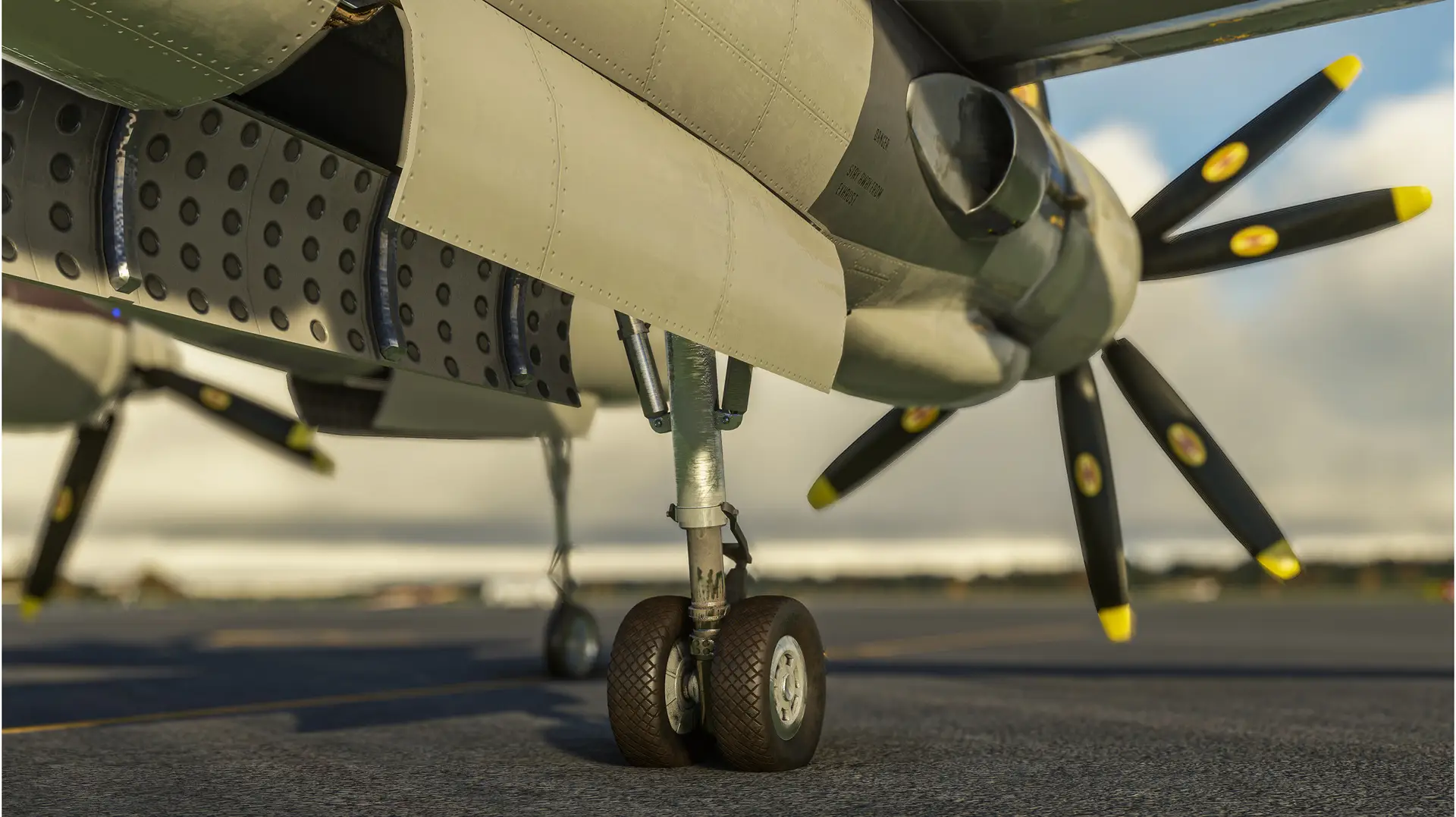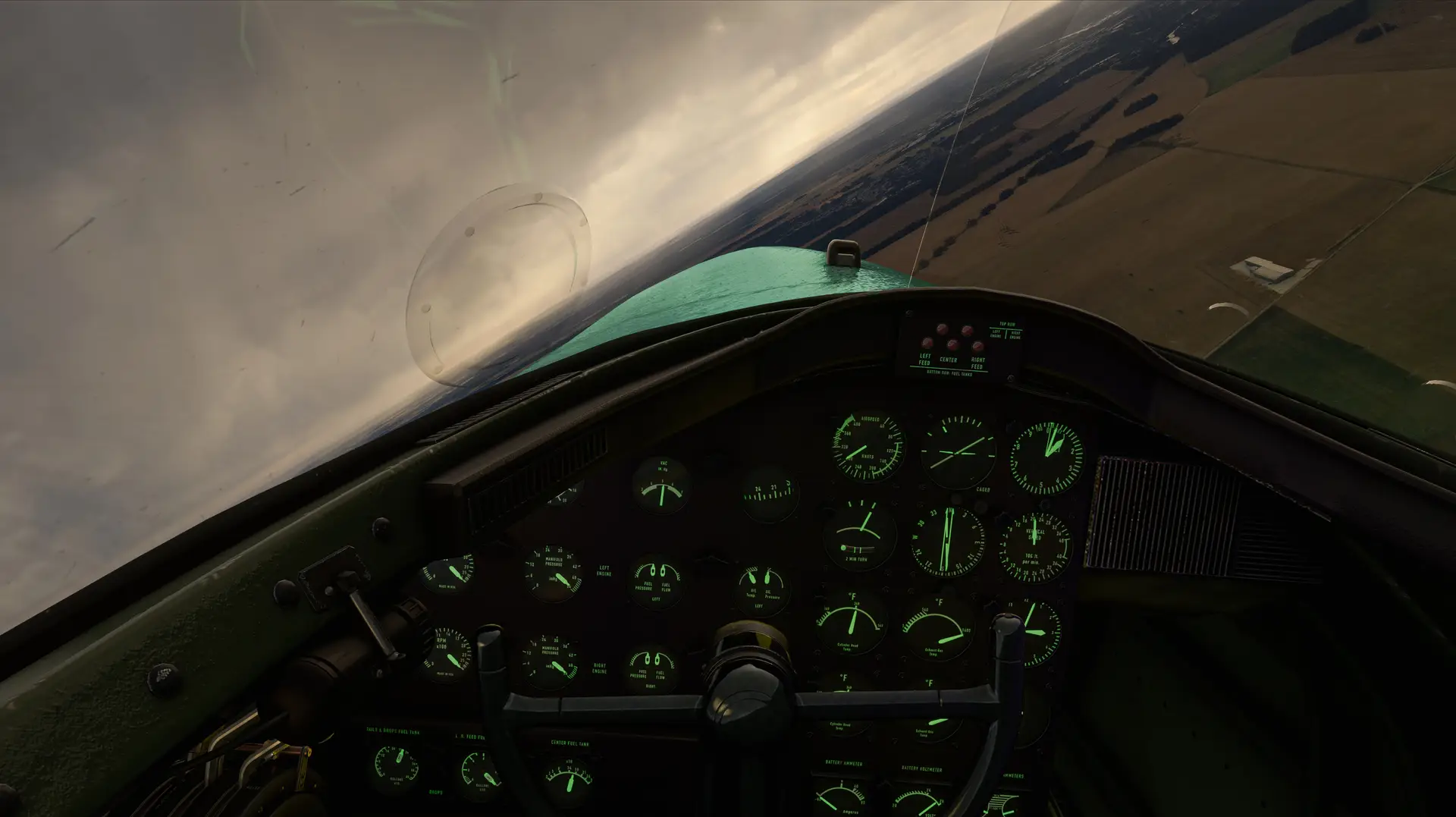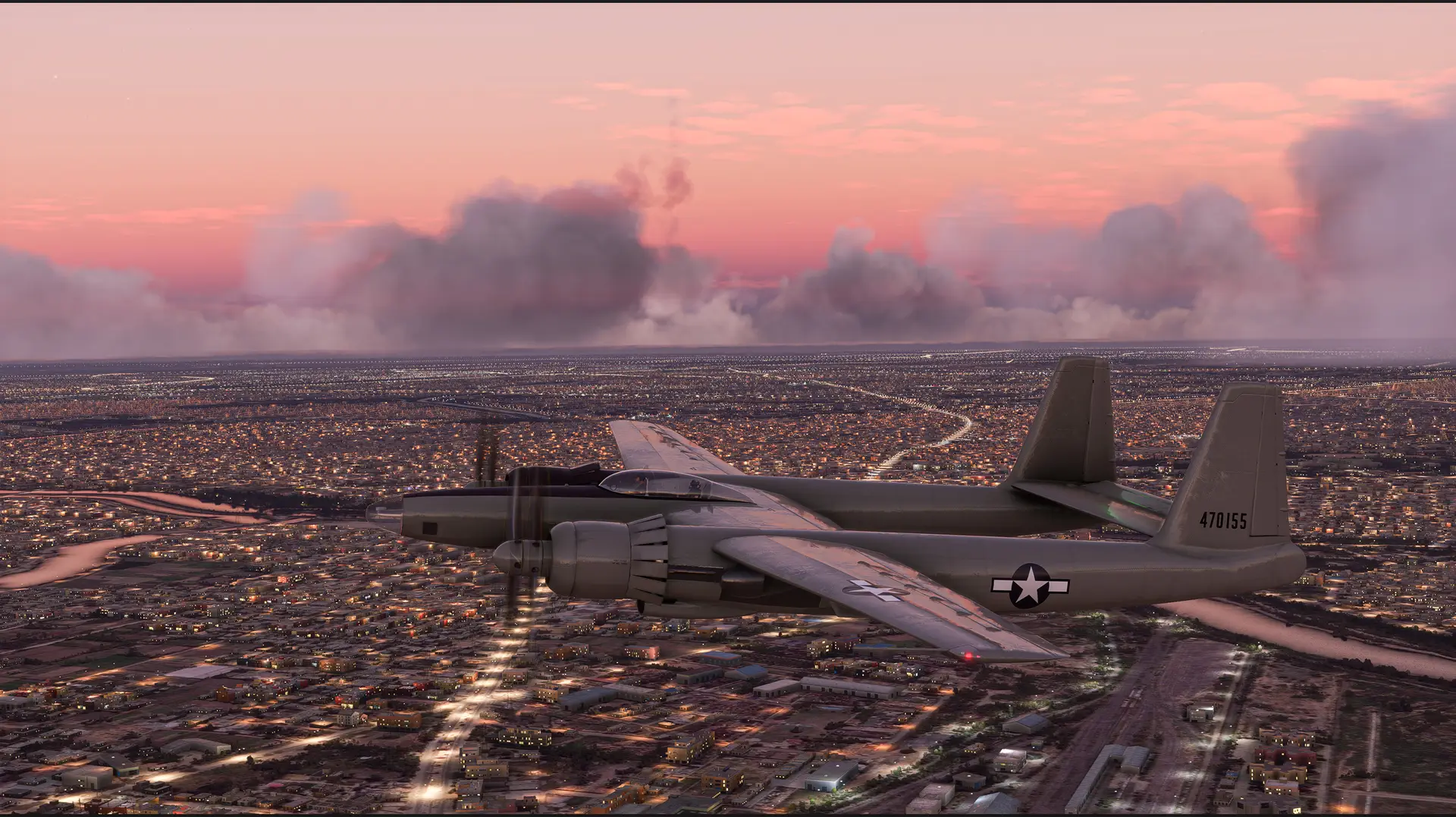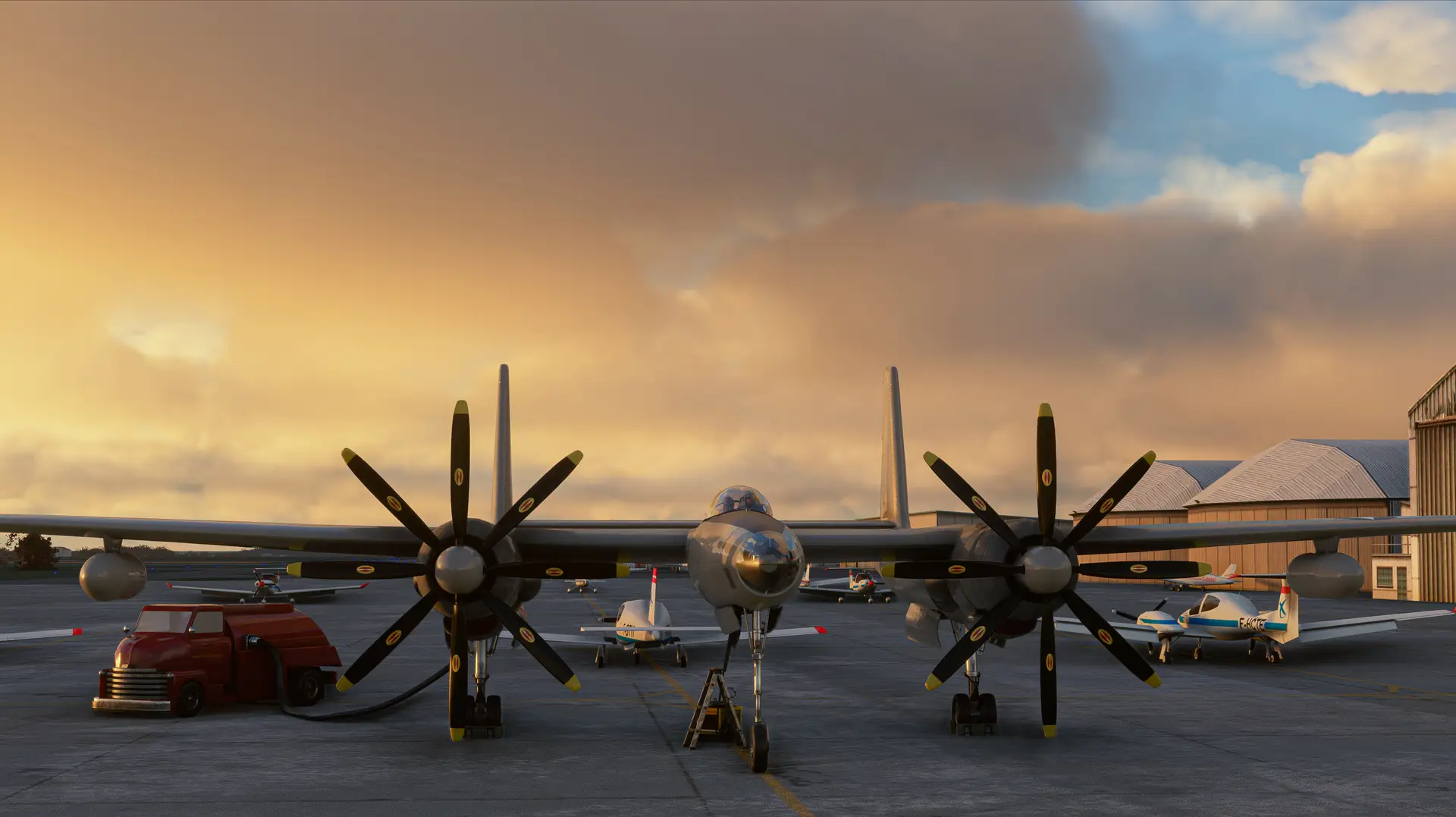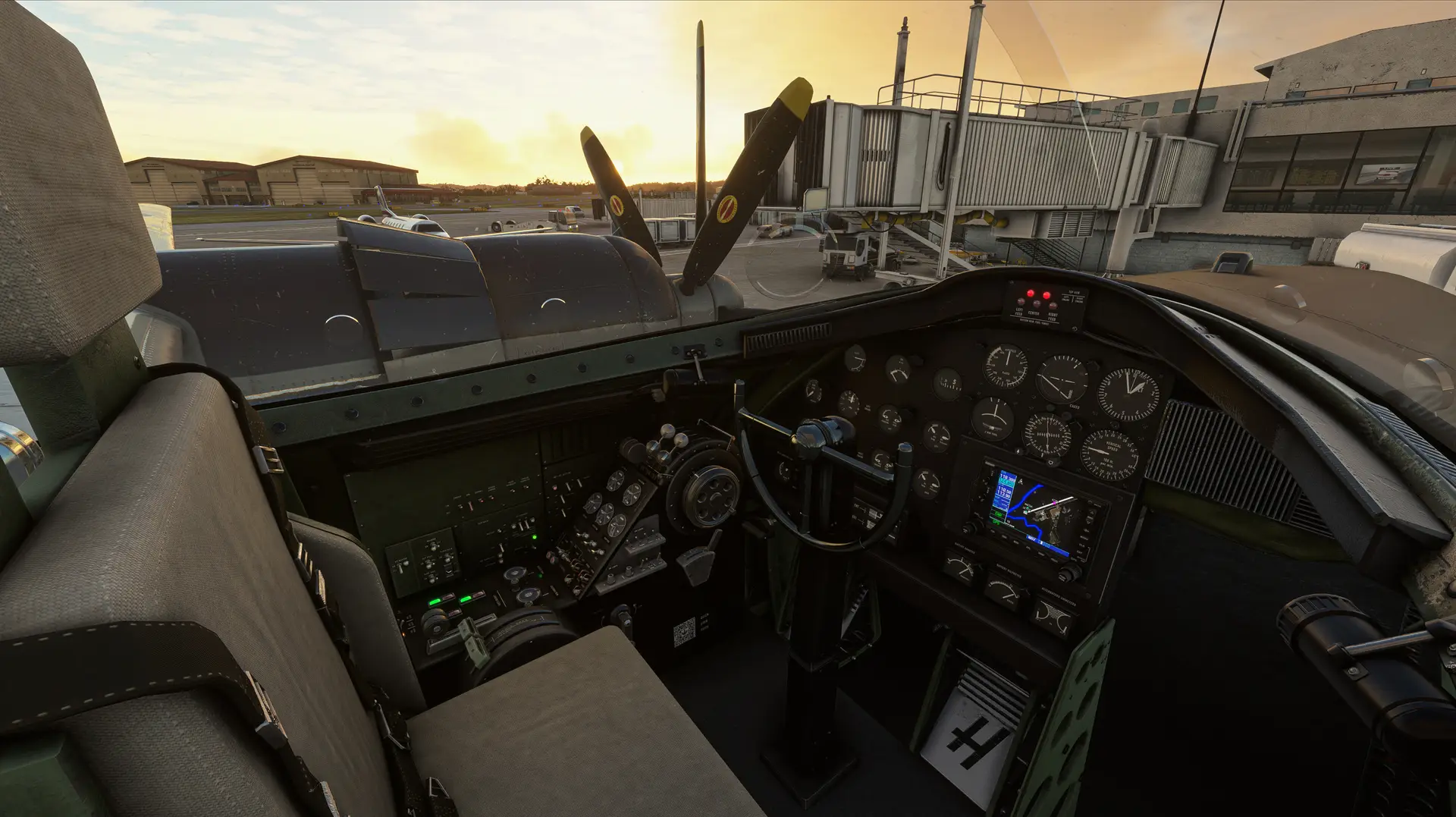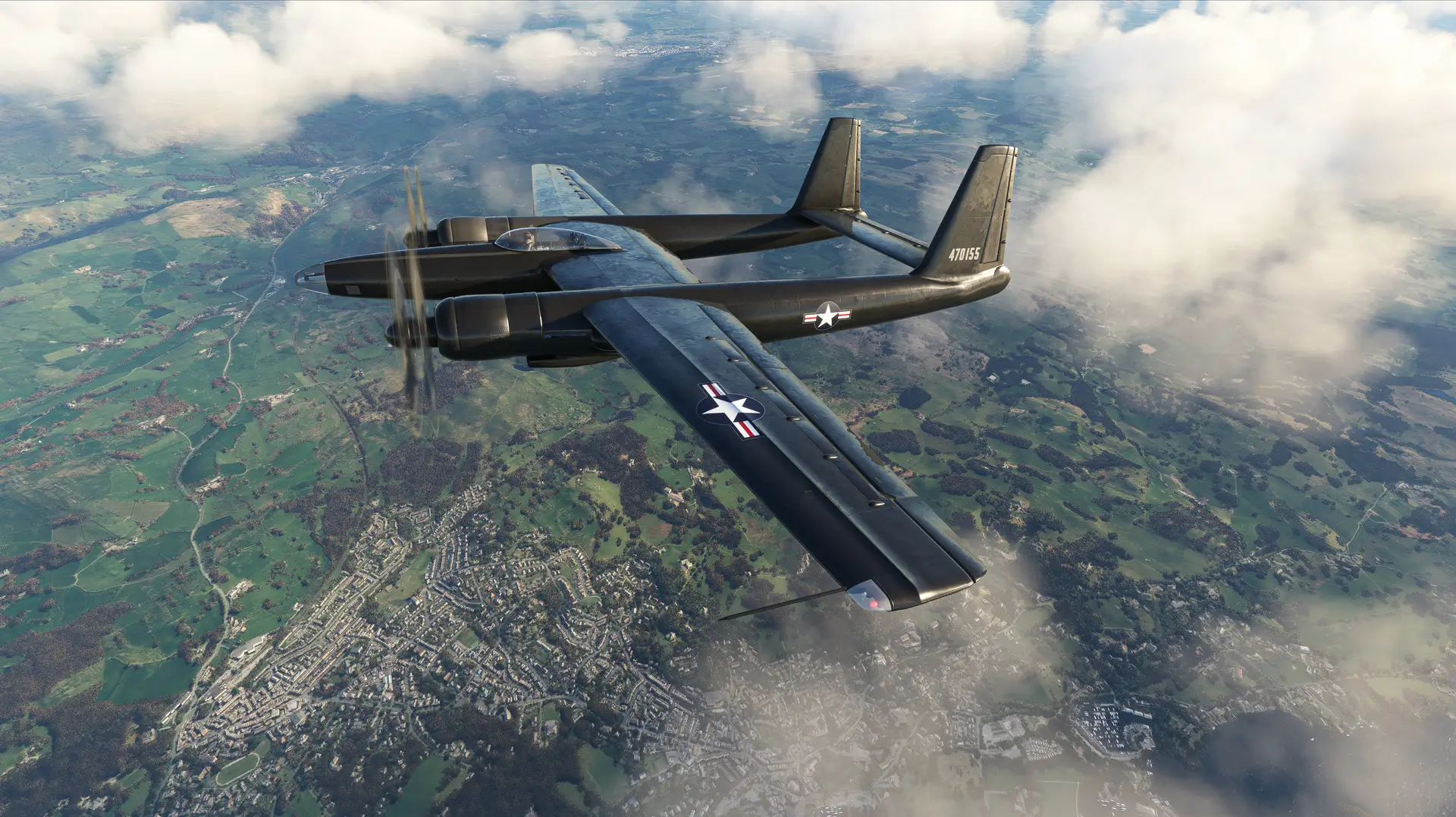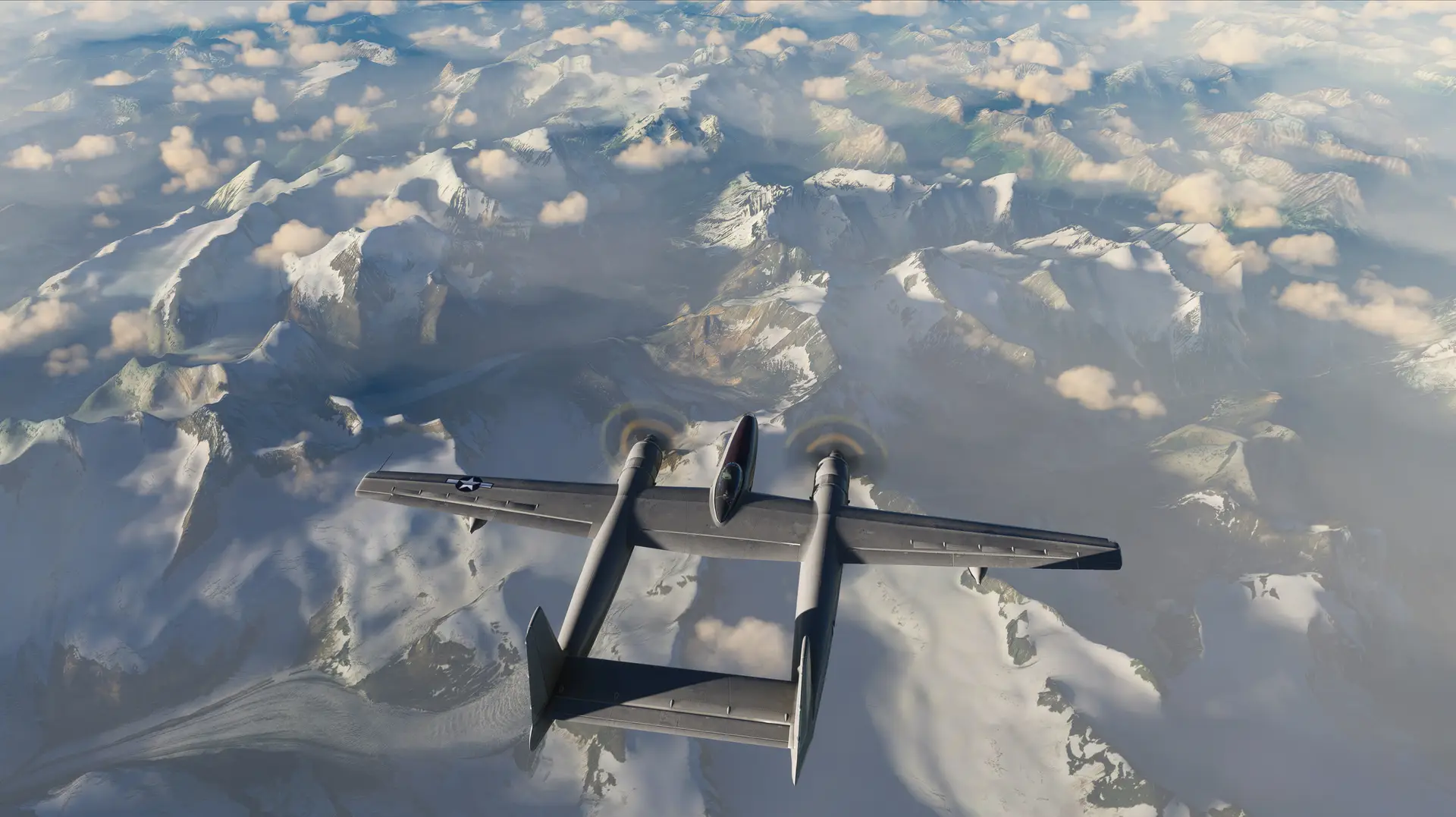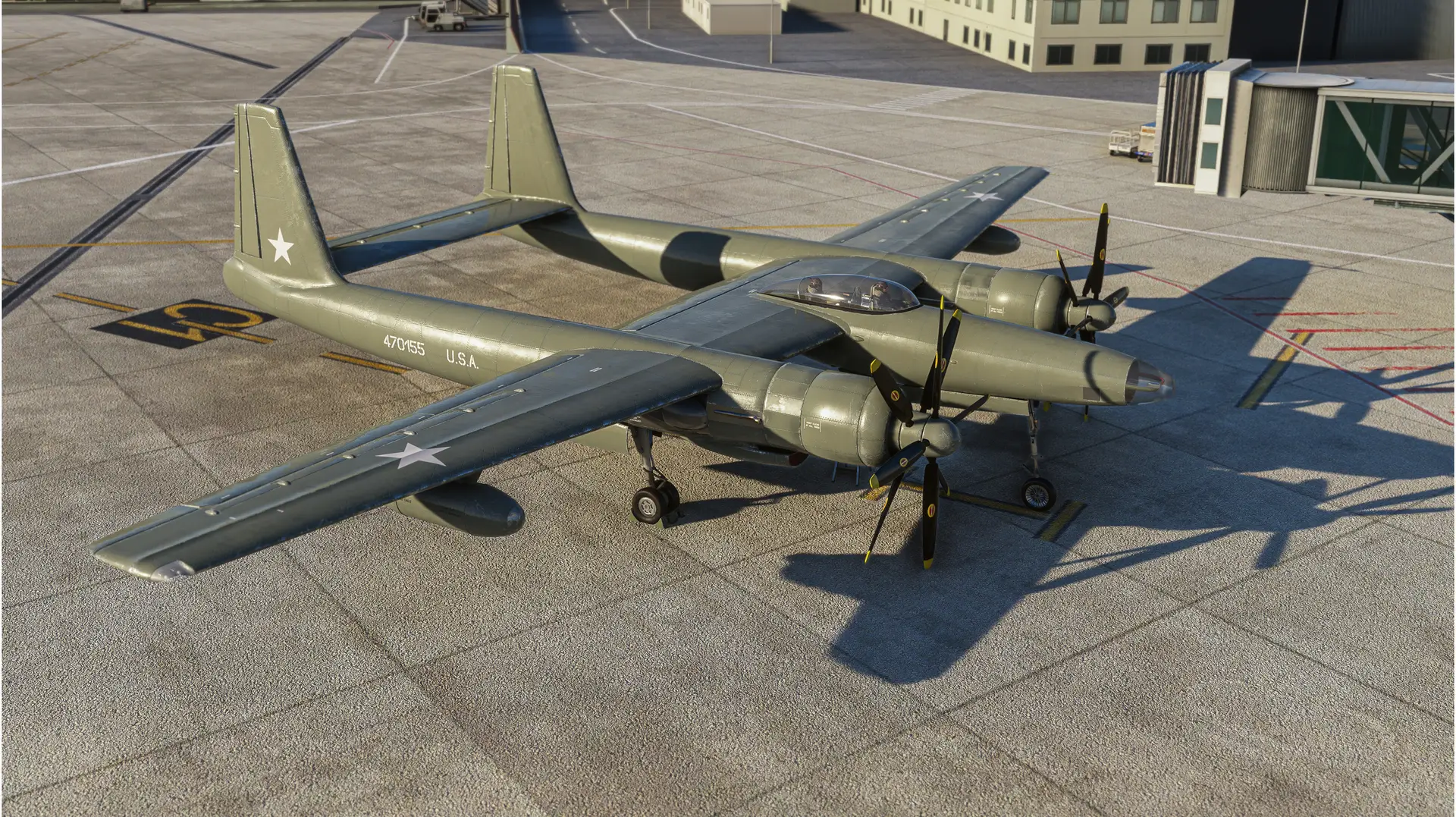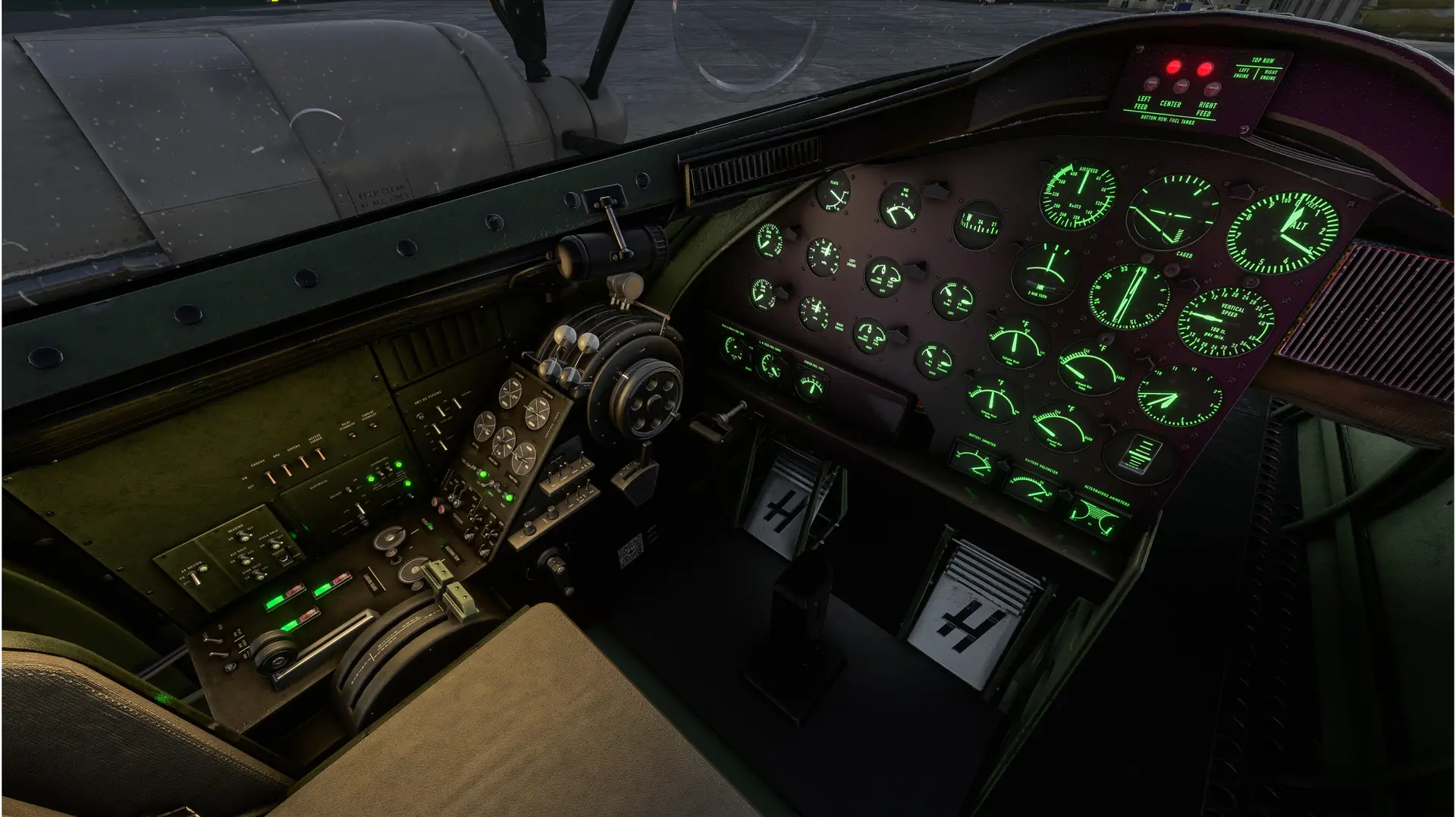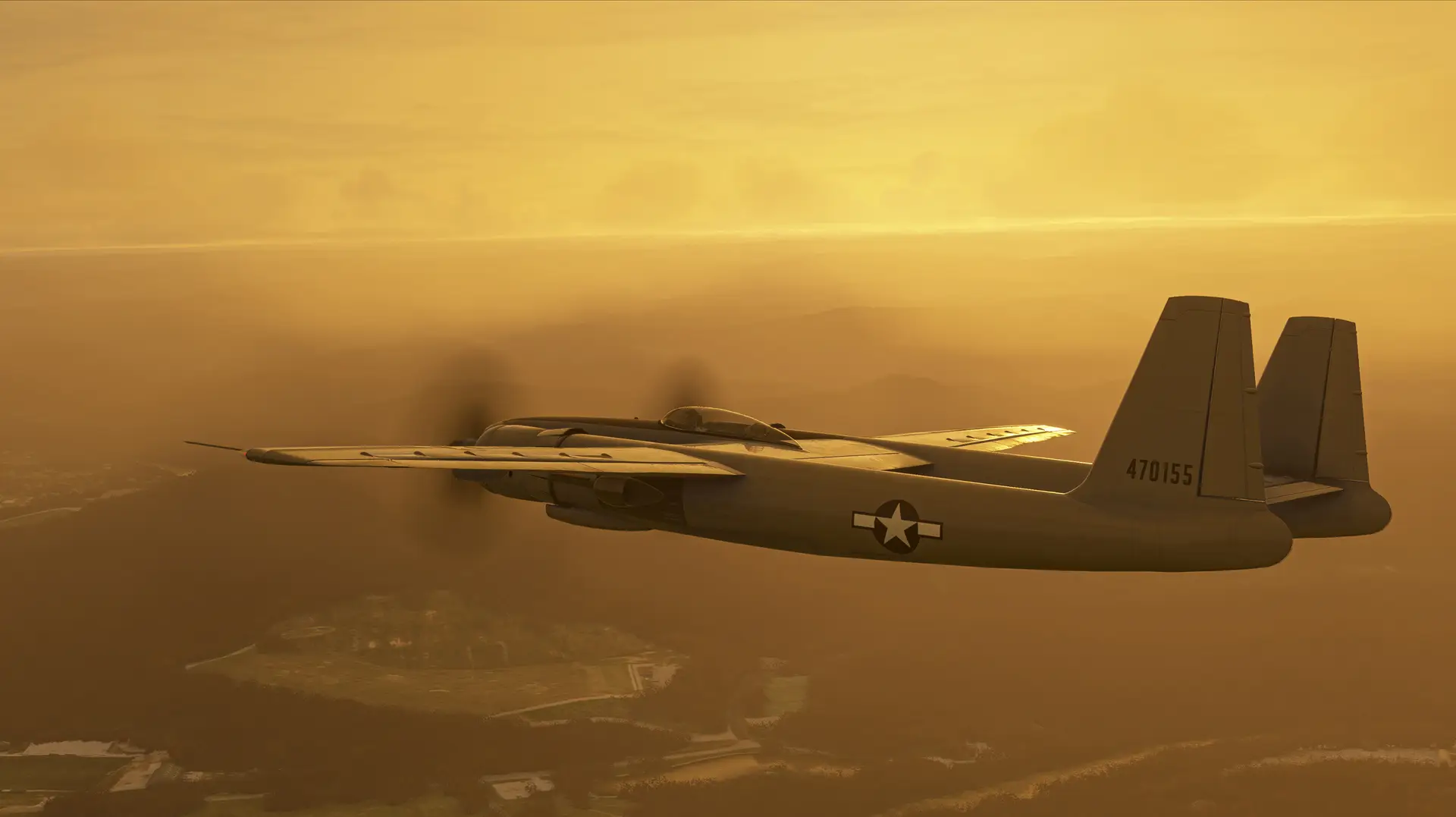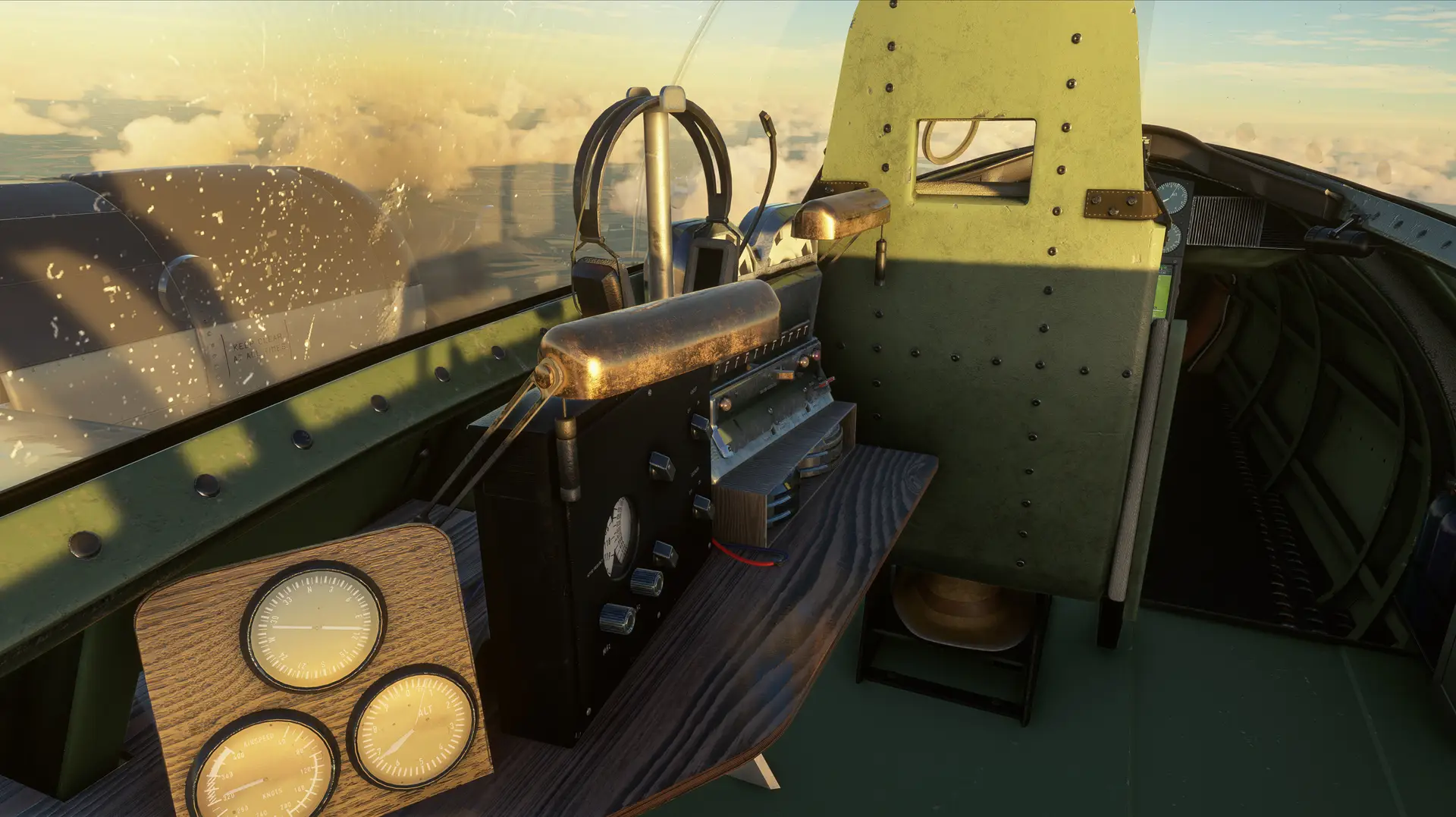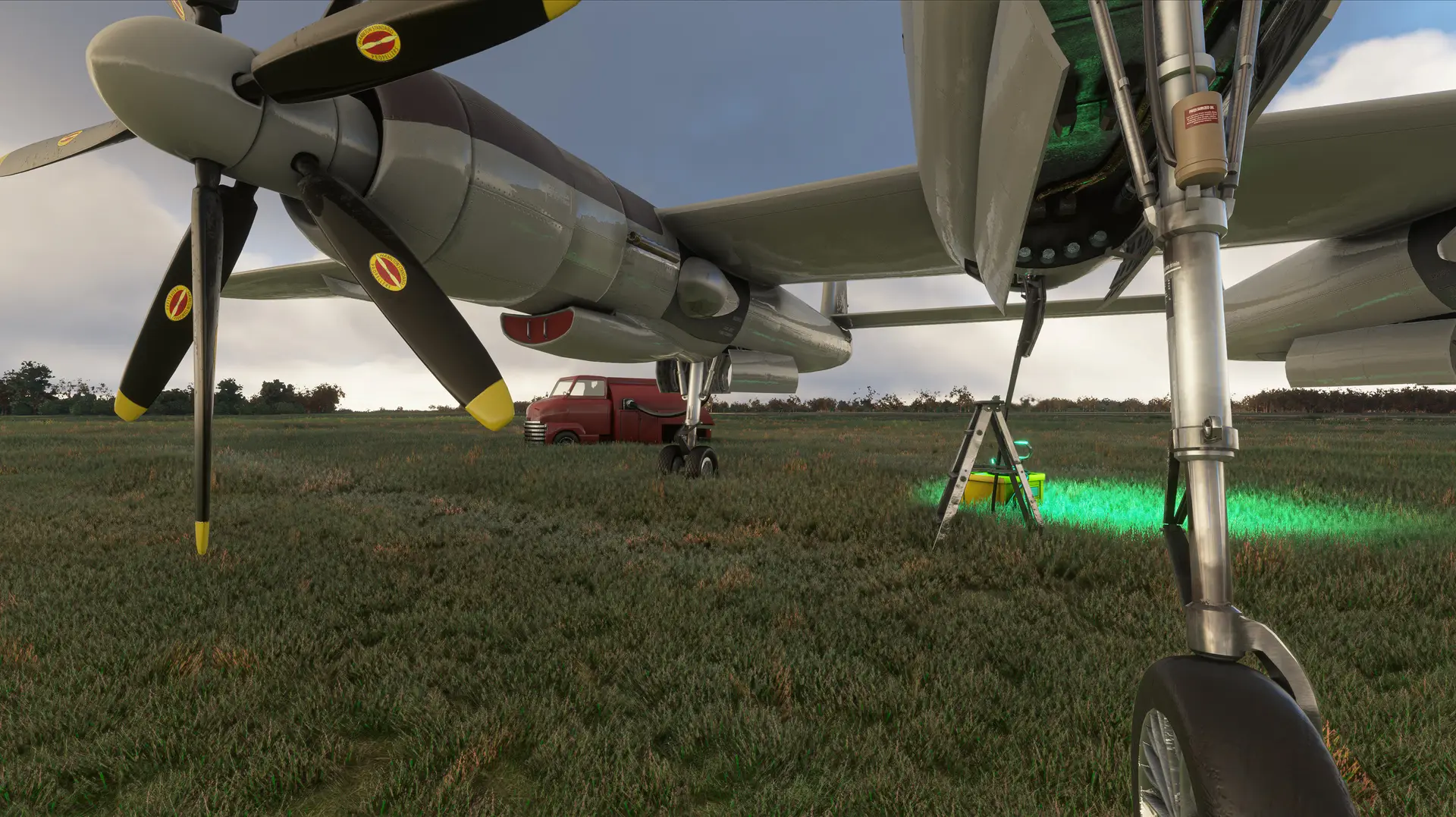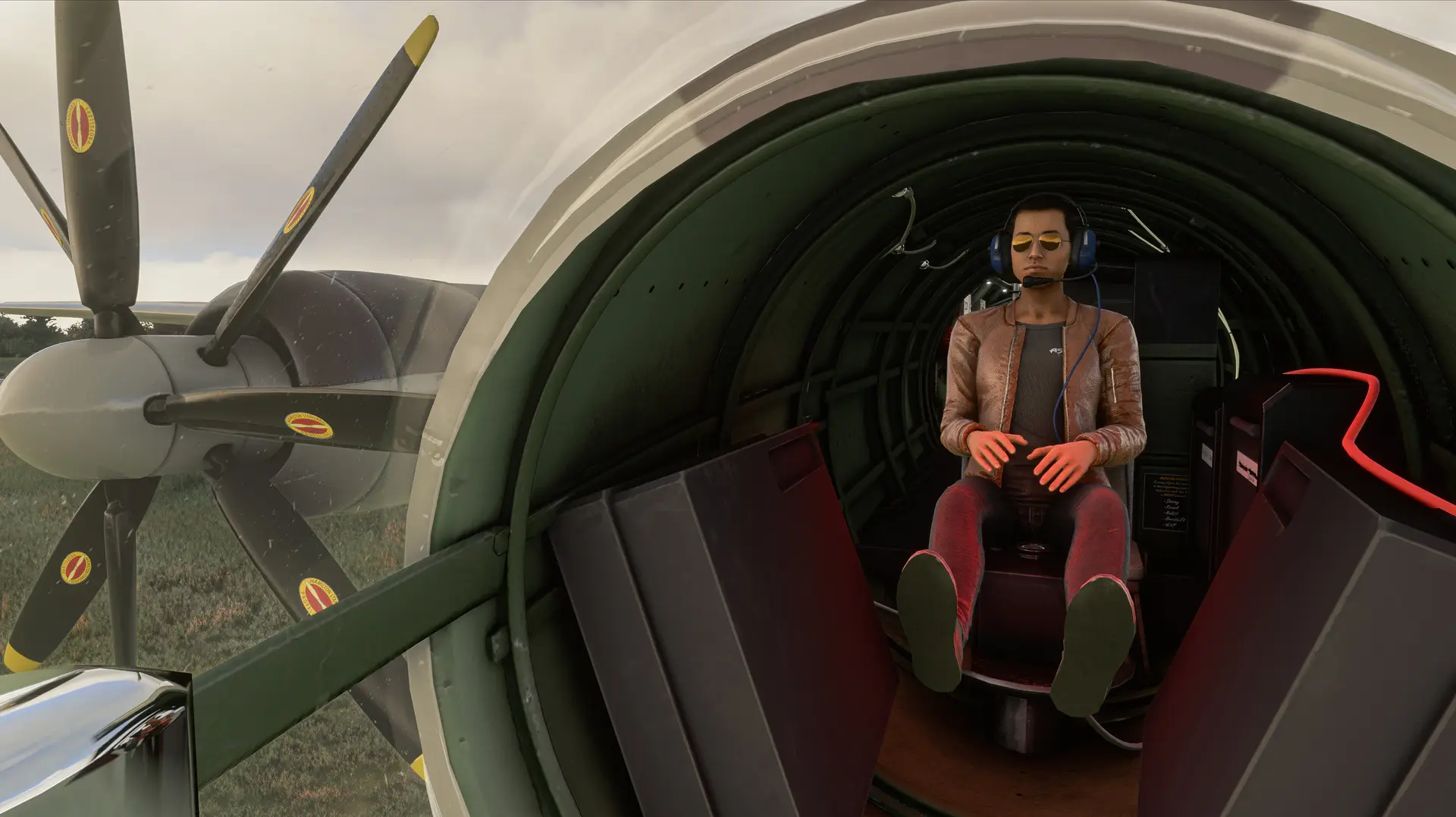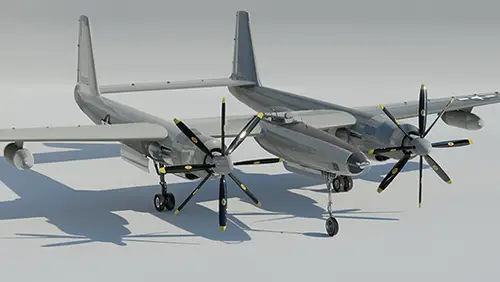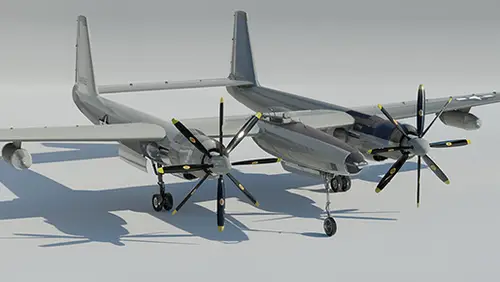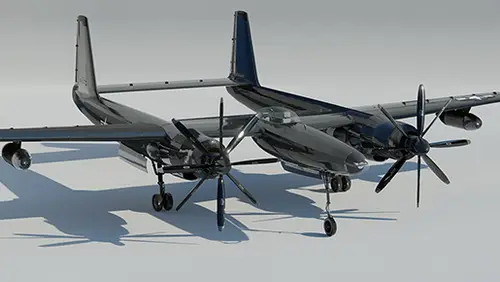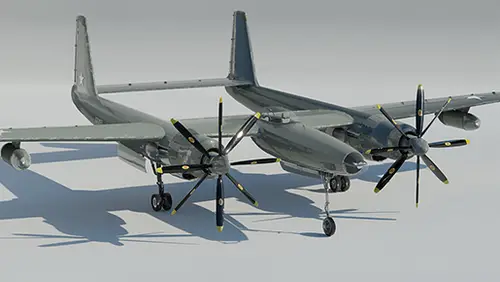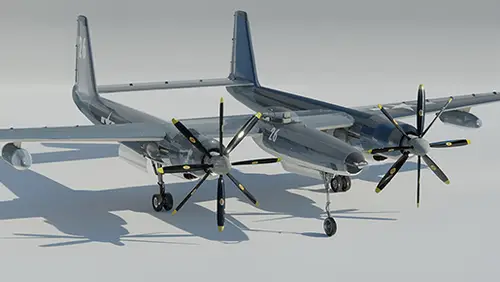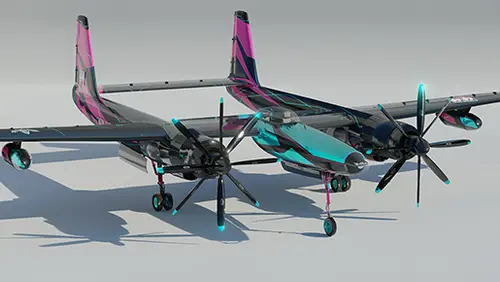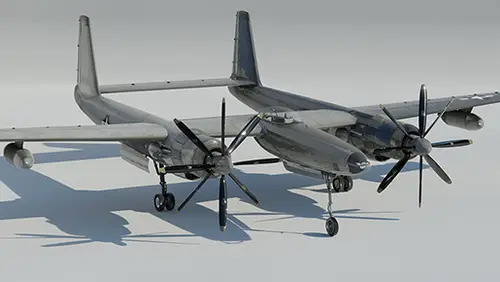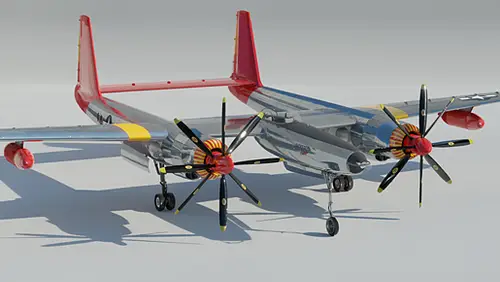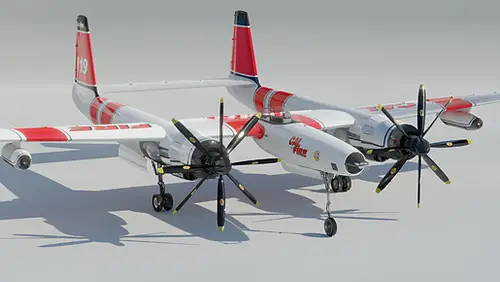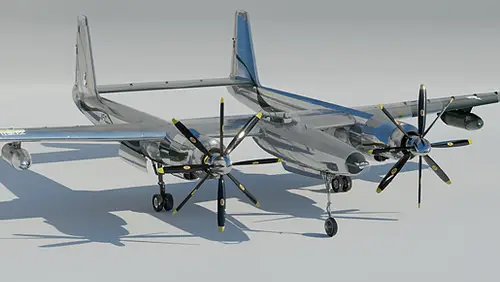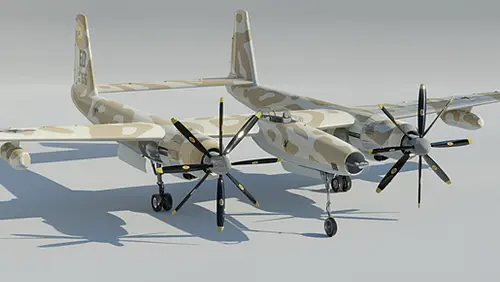- USD 26.99
- View more offers at FS Addon Compare
- Added: April 4, 2024
- Updated: July 28, 2025
In 1943, the Hughes Aircraft Company took order from the USAF of a hundred military reconnaissance aircraft with an ambitious flight enveloppe including fast altitude, high cruise speed and unbeatable range. Three years later, this first prototype of the XF-11 was born. 6,000 horsepower provided by two Pratt and Whitney 28-cylinders radial beasts. The impressive "Wasp Major". And everything about this aircraft is over the top:
- 16 enormous blades mounted on 2x2 contra-rotating propellers.
- A ceiling altitude of 44,000 feet.
- A cruise speed of 300 knots at 30,000 feet
- And a range of 5,000 Miles (4,300 NM).
Unfortunately this beauty was destroyed during its first flight, ending prematurely the story of the XF-11, but luckily making no casualities.
Today, Flying Fries is proud and honored to present you a virtual replica of this iconic aircraft. We have been scraping old drawings, schematics and low-quality photos for months, and here is the result in all its glory. A fully custom made aircraft, with high quality modeling and texturing, and a unique level of interaction with each system and each switch, down to every single circuit breaker.
The flight model has also been patiently crafted using Asobo's latest tools (CFD, modern propellers, modern fuel system, etc.).
From the complexity of the electrical and fuel systems to the custom pressurization module or the ground power unit and exterior items that you can operate directly by getting out of the plane and clicking on them, we have pushed the immersion to its maximum.
Take off, set the auto-pilot and explore the vast cockpit of the XF-11. You will start with the pilot and navigator area, but you will also be able to crawl in the nose section into the photographer seat, to take a look through the lens of your camera or just contemplate the world by sitting in the fully transparent glass dome at the nose. And when you're done, you can check on the lower deck that the access door is closed and all 12 fuel valves are properly set.
For the bravest among you, there are some random failures of various severity that could trigger during your flight, making your life much more complicated!
Did we mention the useful clipboard that will allow you to set all your options, check your failures and handle your refueling tasks without opening the in-game fuel menu? And did we mention the many easter eggs that are yours to find?
Here is a comprehensive list of this XF-11 features:
- Highly detailed 4K textures.
- Engines, landing gear bays, two cockpit decks, etc. fully modeled and textured.
- Precise CFD flight model.
- Era-correct auto-pilot installed.
- Random failures available with various severity levels - disabled by default.
- Garmin GNS 530 available with one click.
- Fully compatible with Garmin GTN 750 by PMS50 if installed.
- Aircraft configuration and refueling via the clipboard (no need for the fuel and payload menu).
- Complex electrical system with functioning circuit breakers.
- Complex fuel system with 7 tanks, 10 pumps and so many routing possibilities!
- Variable propeller pitch with feathering and reverse pitch.
- Engine and ground roll vibration effects on the levers and needles.
- Custom interior lighting with dimmable lights and UV lights.
- Interactive exterior static elements (remove the chocks or plug the GPU manually if you want).
- 8 liveries included.
- 4 LODs for performance optimization in multiplayer.
- A lot of custom sound effects.
- Custom visual effects: Epic smoke when you start the engines, fuel leaks, etc.
- Interactive in-game checklists with all the highlits and cameras you need.
- A long, detailed and illustrated user manual.
- A few hidden easter eggs!
